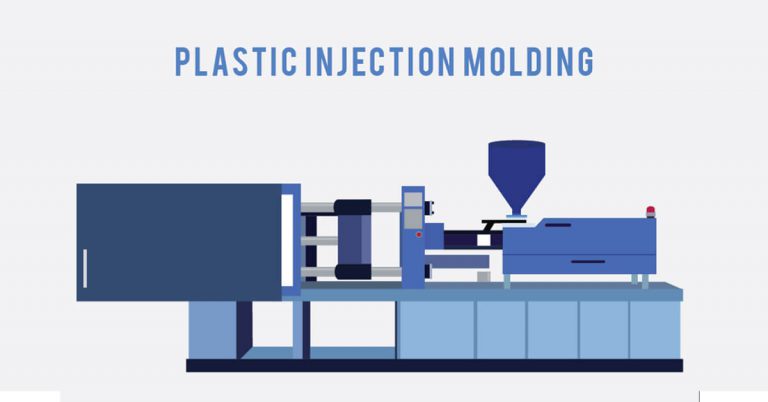Plastic Injection Molding & Mold Making: Demystifying 4 Common Myths
One of the most cost-effective and efficient processes to mass-manufacture various kinds of plastic parts can be ensured by exacting tolerances in a short period of time. However, the first step is to use injection molding techniques to create molds. This part of the process is usually plagued with different kinds of misconceptions and myths.
Listed below are 4 common types of myths about injection molding and mold making.
- Any Shape is Moldable
There is a huge misconception that plastics of any shape can be easily molded. Most of the designs need to be first modified if they cannot be molded to 90% of the original design.
The needed perfection usually depends upon the balance of the channels and melt flow through which heat is exchanged. If the plastic does not freeze uniformly, the mold will end up becoming useless for all its purposes and intentions.
- Not Meant for Prototyping
When it comes to prototyping, plastic injection molding there is a misconception about it not being suitable. This could not be farther from the truth. Injection molding techniques provide cost-effective solutions for manufacturing samples that resemble the original product. It can even design high-quality prototypes at a faster rate than any other option and it can do so accurately.
- Mold Making Produces Tons of Scrap
This statement is false. Injection molding and mold making are known to produce minimal amounts of waste compared to traditional manufacturing processes. Other less advanced processes can eat away a significant chunk of the original plastic block, thereby generating more scrap.
Four areas of the injection molding machine are responsible for minimal amounts of plastic waste. They are – runners, gate locations, cavity, and sprue.
- Only Injection Molding Parameters can Solve Quality Issues
This myth is not true. Injection molding is not the only way. Other ways can rectify molding processes as well. For instance, constraints such as sink marks, dimensional inaccuracies, shrinkage, and warpage can be taken care of by mold designs.
However, it is crucial to use the effective part and mold designs while setting the injection molding parameters. It is therefore safe to say that the end product’s quality can be largely determined before production begins.
Final thoughts
We hope this article has brought forth some common molding myths to light. By using reliable injection molding machinery and finding reliable programmers, one can easily optimize their manufacturing process and boost the production of plastic parts.
Leave a Reply Cancel reply
Recent Posts
- Understanding The Materials That Are Used To Build Plastic Toys
- All You Need To Know About Food-grade Plastics
- A Glance At The Materials That Boost The Performance Of Plastics
- Understanding The Importance Of Exploring New Business Opportunities In The Plastic Industry
- Understanding The Importance Of Investing in R&D For The Plastic Industry
Categories
- 3D Printing
- AIPMA
- Automation
- Automobile Sector
- Bio Plastics
- Environment
- Innovations In Recycling
- Latest Innovations
- Molds & Dies
- News
- Packaging Industry
- Plastic
- Plastic Application
- Plastic Industry
- Plastic Market
- Plastic Myths
- Plastic News From The World
- Plastic Packaging
- Plastic Products
- Plastic Recycling
- Plastic Solar Cells
- Plastic Toys
- Plastic Waste
- Plastic World
- Plastics
- Plastics And Their Applications
- Plastics In Agriculture
- Plastics In Healthcare
- Plastics In Medical Industry
- Plasticulture
- Processing Machinery
- Recycling Machines
- Robotics
- Uncategorized
- Virtual Reality
Archives
- November 2023 (3)
- October 2023 (2)
- September 2023 (3)
- August 2023 (3)
- July 2023 (3)
- June 2023 (3)
- May 2023 (2)
- April 2023 (2)
- March 2023 (2)
- February 2023 (2)
- January 2023 (2)
- December 2022 (3)
- November 2022 (1)
- October 2022 (1)
- September 2022 (2)
- August 2022 (1)
- July 2022 (3)
- May 2022 (3)
- March 2022 (2)
- February 2022 (1)
- January 2022 (1)
- September 2021 (2)
- August 2021 (3)
- July 2021 (4)
- June 2021 (4)
- May 2021 (3)
- April 2021 (2)
- March 2021 (4)
- November 2019 (8)
- October 2019 (8)
- September 2019 (8)
- August 2019 (8)
- July 2019 (8)
- June 2019 (8)
- May 2019 (8)
- April 2019 (8)
- March 2019 (8)
- February 2019 (11)
- January 2019 (8)
- December 2018 (8)
- November 2018 (12)
- October 2018 (12)

